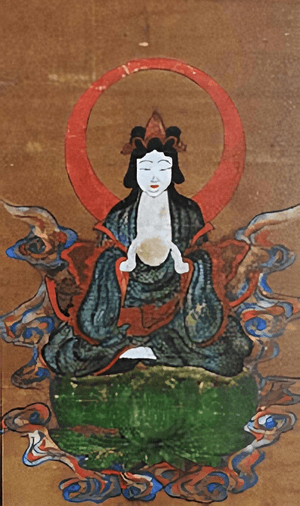Tsukuyomi facts for kids
Tsukuyomi (pronounced Soo-koo-YOH-mee), also known as Tsukuyomi-no-Mikoto, is the god of the moon in Japanese mythology. He is a very important figure in the stories of ancient Japan.
Tsukuyomi is known as the brother of two other powerful gods: Amaterasu, who is the goddess of the sun, and Susanoo, who is the god of the sea and storms. Together, these three gods are some of the most famous deities in Japanese legends.
Who is Tsukuyomi?
Tsukuyomi is the god who rules over the moon. In Japanese myths, the moon is seen as a calm and mysterious part of the sky. Tsukuyomi's role is to watch over the night and its cycles.
Family and Role
Tsukuyomi, Amaterasu, and Susanoo were all born from the god Izanagi. Izanagi was one of the first gods who created the Japanese islands.
- Amaterasu, the sun goddess, rules the day and brings light.
- Susanoo, the storm god, is known for his wild nature and control over the seas.
- Tsukuyomi, the moon god, brings the gentle light of the night.
These three siblings represent different parts of the world and nature. Their stories often explain how the world works and why things are the way they are.
Stories of the Moon God
While Amaterasu and Susanoo have many famous stories, Tsukuyomi is often seen as a more quiet god. One well-known myth tells of a time when Tsukuyomi was sent to a feast by Amaterasu. At the feast, the goddess of food, Uke Mochi, created food in a strange way. Tsukuyomi found this disrespectful and killed her.
Amaterasu was so angry about this that she refused to face Tsukuyomi ever again. This is why, according to the myth, the sun and moon are never seen in the sky at the same time. They are always separated, one ruling the day and the other ruling the night.
Images for kids
-
A shrine to Tsukuyomi-no-Mikoto at Matsunoo-taisha in Kyoto
See also
 In Spanish: Tsukuyomi para niños
In Spanish: Tsukuyomi para niños




